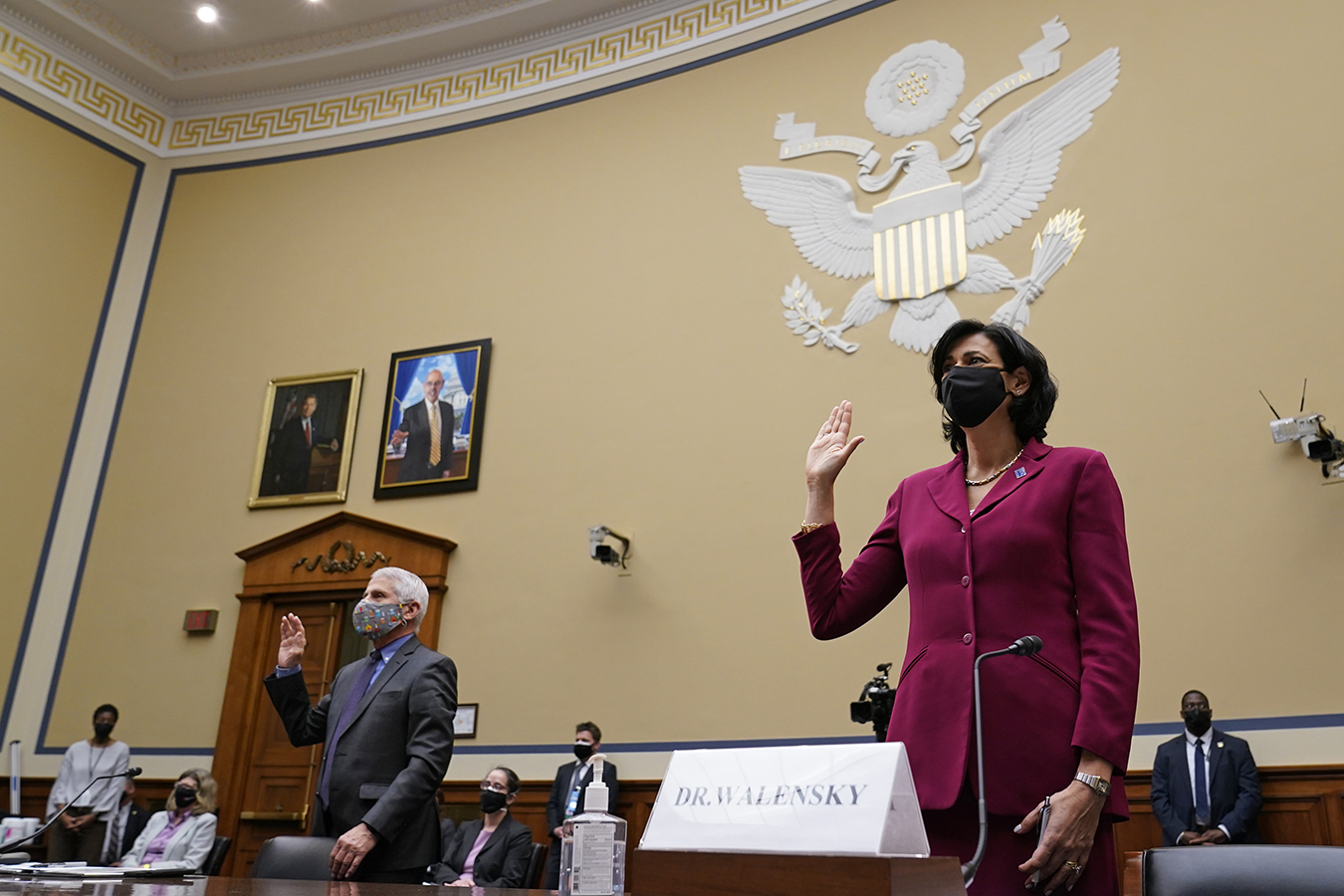On Friday, Centers for Disease Control and Prevention Director Rochelle Walensky said people whose jobs put them at risk of coronavirus infection qualify for a shot to boost the protection of their covid-19 vaccination.
That step to include people with “institutional and occupational exposure” overrules the recommendation of her agency’s advisory panel, and the move was a surprise to many.
“It was not expected, but I think the director, Walensky, wanted to go along with what the FDA had said earlier in the week and to kind of back up the plan that President Biden had laid out in August,” said KHN senior correspondent Sarah Jane Tribble.
Others who can line up first for a covid booster include Americans age 65 and older, younger people who have underlying health conditions and nursing home residents.
So far, regulators have done a poor job of defining the universe of people considered at risk because of institutional and occupational exposure, said Arthur Allen, an editor for KHN’s California Healthline.
“We don’t know exactly who they all are. But we can think of some obvious groups who would have been very upset if they couldn’t be qualified for a booster. That includes health care workers and teachers,” Allen said.
“We have to remember this is not really just a purely scientific decision,” he said.
During the Sept. 23 meeting of the CDC’s Advisory Committee on Immunization Practices, members tried to get a handle on Americans’ demand for covid boosters: In surveys from August, as many as 87% vaccinated adults said they would get an additional dose if it were available. Another later survey found that 93% of adults would get the shot if a primary care provider recommended it.

How Fauci and the NIH Got Ahead of the FDA and CDC in Backing Boosters
With real-time data streaming in from highly specialized researchers in the U.S. and abroad, NIH scientists became convinced that boosting the covid-19 vaccine was needed to save lives, prompting the president to announce a plan with a Sept. 20 start date. Scientists at the regulatory agencies weren’t yet convinced. Here’s the story from behind the scenes.
Source: Read Full Article






